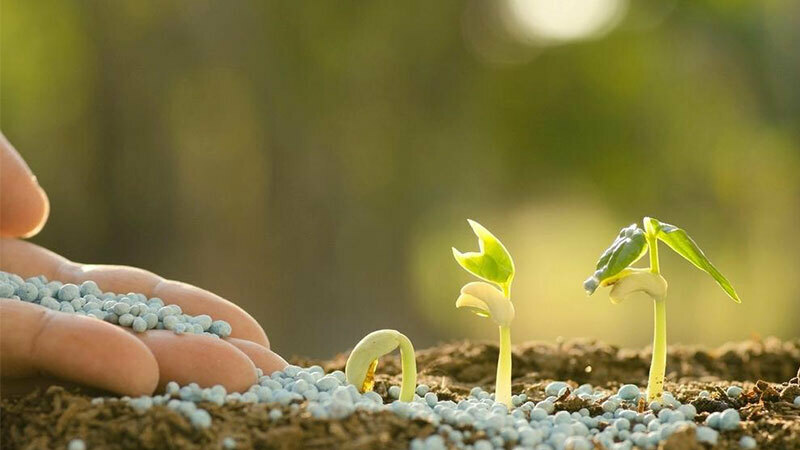
Evs project on chemical fertilizer for class 12th
Acknowledgment:
I would like to extend my sincere appreciation to everyone who has assisted me in finishing my thesis on “Chemical Fertilisers,” as their assistance and direction have been crucial in forming this study.
I owe a great deal of gratitude to my school and subject instructor for giving me the chance to research this subject and for their ongoing support throughout the project.
I would like to express my heartfelt gratitude to the library staff for their aid in locating pertinent research materials and resources, which was very helpful in the creation of this paper.
I’m also appreciative of my friends and parents for being supportive and understanding during this academic adventure. Their support and confidence in me have been crucial in helping me stay motivated and focused so that I may successfully accomplish this endeavour.
Finally, I’d want to thank all the writers, researchers, and scientists whose writings and papers served as the basis for this undertaking. Our knowledge and comprehension of chemical fertilisers have greatly increased because to their contributions to the area.
We appreciate your participation in this project and your contributions to making it a success.
Introduction:
Chemical fertilisers have revolutionised contemporary agriculture, making a substantial contribution to rising crop yields and increased food production worldwide. These synthetic materials, which are abundant in essential nutrients like nitrogen, phosphorus, and potassium, provide plants the nutrition they need for healthy development and production. But the widespread and unchecked use of chemical pesticides has led to worries about how it may affect the environment and human health.
We examine the environmental effects of chemical fertilisers in this Environmental Science (EVS) project. In addition to exploring the advantages they provide in increasing agricultural productivity, we also want to shed light on the myriad ecological and societal challenges they pose. Understanding the benefits and drawbacks of chemical pesticides can help us identify sustainable alternatives and encourage responsible behaviour for a greener and healthier future.
We will examine the types and content of chemical fertilisers used in modern farming as well as their serious environmental effects throughout this project. We will examine how chemical fertilisers affect soil health, water bodies, air quality, and biodiversity while highlighting the need for better management strategies to lessen these effects.
The potential hazards to human health posed by consuming crops fertilised with chemicals and by being exposed to environmental toxins resulting from their use will also be explored. Knowing these concerns will make it more important than ever to adopt farming practises that protect both the environment and human well-being.
We will investigate various sustainable agricultural methods, including organic farming, integrated nutrient management, and crop rotation, that provide promising solutions for reducing reliance on chemical fertilisers while preserving soil fertility and ecosystem integrity in order to address the challenges associated with chemical fertilisers.
The goal of this EVS project is to provide a comprehensive review of the effects that chemical fertilisers have on the environment and human society. We want to encourage people, farmers, and policymakers to embrace sustainable approaches to agriculture by fostering awareness and understanding. This will help to foster harmony between agricultural production and environmental preservation. Together, we can work to create a balanced and sustainable future for future generations.
Benefits of chemical oxidizers:
- Increased Crop Yields: One of chemical pesticides’ main advantages is their potential to greatly increase crop yields. Chemical fertilisers ensure that plants have an ample and readily available supply of the nutrients required for their optimum development by giving essential nutrients in concentrated quantities. This results in larger harvests and increased agricultural production, helping to meet the rising demand for food throughout the world.
- Precision and customization: Chemical fertilisers provide a high level of both. Farmers may choose fertilisers with specific nutrient compositions to meet the precise requirements of various crops and soil types. With this targeted strategy, resources may be managed effectively, preventing the waste of nutrients that may not be necessary.
- Cost-Effectiveness: When compared to organic alternatives, chemical pesticides are often more affordable. A wide range of farmers may use them due to their cost-effectiveness, especially those with little financial resources. This accessibility aids small-scale farmers in enhancing their yields and helps to improve agricultural practises.
- Improved Storage and Transportation: When compared to organic alternatives, chemical pesticides have a longer shelf life and are less prone to spoilage. This characteristic makes it easier to store and transport fertilisers, ensuring that they are accessible and available for use over longer time periods and in isolated agricultural areas.
- Improved Plant Quality: Chemical fertilisers’ ability to facilitate quick nutrient uptake may result in improved plant quality, including better fruit and vegetable colour, size, and flavour. By demanding higher prices in the market, this not only benefits farmers but also improves the general food quality for consumers.
- Restoring Fertility: Chemical fertilisers may assist in replenishing essential nutrients in depleted soils, restoring fertility and production. Chemical fertilisers may be quite useful in reviving agricultural fields in areas where soils have been depleted as a result of intensive farming.
- Protection Against Climate Variability: Chemical fertilisers may provide protection against crop loss due to nutrient leaching in areas that are susceptible to unpredictable weather patterns and frequent changes in precipitation. Plants may better endure extreme weather conditions if there is a sufficient supply of nutrients in the soil.
While chemical pesticides have many benefits, it’s vital to remember that their excessive and improper use may have detrimental environmental effects. Therefore, it is essential to use chemical fertilisers responsibly and wisely, together with sustainable farming methods, in order to maximise their benefits while minimising potential environmental impact.

Issues with chemical fertilisers’ environmental impact:
Chemical fertilisers used excessively and continuously may cause soil degradation. The natural balance of soil pH and nutrient levels might be upset by the high concentration of salts and nutrients in these fertilisers. This might lead to the soil being more acidic or alkaline, which would reduce soil fertility and negatively impact the microbial ecosystem that fosters plant development.
Excess nutrients that are not absorbed by plants may run off when chemical fertilisers are applied in large quantities or during periods of heavy rainfall, potentially contaminating nearby water bodies. This runoff leads to nutrient enrichment (eutrophication) by carrying nitrogen and phosphorus into rivers, lakes, and oceans. Overabundant nutrients in water bodies cause algal blooms, which lower oxygen levels and destroy aquatic life.
Water contamination in the ground: Certain chemical fertilisers, particularly nitrates, are very soluble and may percolate through the soil into water supplies. Nitrite generation from the nitrate contamination of groundwater poses a serious health danger to children and may result in hemoglobinemia, popularly known as the “blue baby syndrome.”
Application of nitrogen-based fertilisers may result in the release of ammonia and nitrogen oxidants into the atmosphere, which may cause air pollution. These substances contribute to air pollution and may interact with other pollutants to create particulate matter and smog. Additionally, fertiliser emissions of ammonia may cause acid rain.
Chemical fertilisers are produced and used, which results in considerable emissions of greenhouse gases including carbon dioxide (CO2) and nitrous oxide (N2O). A potential greenhouse gas that contributes to climate change is nitrous oxide, which has a far higher potential for global warming than carbon dioxide.
Aquatic ecosystems may experience an oxygen deficit due to the discharge of chemical fertilisers into water bodies and the ensuing algae blooms. Fish and other aquatic species suffer, which reduces biodiversity. Additionally, excessive fertiliser use may alter soil microbial communities, which can affect the biodiversity of beneficial soil species.
Development of Pests and Diseases: Excessive fertiliser use may cause excessive levels of nitrogen in plants, attracting pests and diseases, increasing the risk of crop damage and lowering crop quality. This might set off a cycle where farmers feel pressured to use more fertilisers to make up for it, exacerbating the environmental problems.
It is crucial to adopt sustainable agriculture practises that minimise the use of chemical fertilisers in order to address these environmental issues. Crop rotation, integrated nutrient management, organic farming, and precision agriculture are among methods that may help minimise the environmental effect of fertilisers while preserving agricultural production over the long term. For a healthier environment and to encourage responsible fertiliser use, proper education, awareness, and government policies are essential.
Conclusion
Chemical fertilizer-related environmental problems such soil degradation, nutrient runoff, groundwater contamination, air pollution, greenhouse gas emissions, and biodiversity loss underscore the urgent need for responsible and balanced agricultural practises. Chemical pesticide use that is unchecked and excessive may have a number of negative effects on the environment, human health, and the overall ecological balance.
Adopting sustainable agriculture practises is essential to reducing the adverse effects of chemical fertilisers. As well as boosting soil health, biodiversity, and ecosystem resilience, adopting practises including organic farming, integrated nutrient management, crop rotation, and precision agriculture may help reduce reliance on chemical fertilisers.
In order to encourage farmers, policymakers, and consumers to make knowledgeable decisions regarding the use of fertilisers, education and awareness are essential. Understanding the potential hazards and benefits of chemical fertilisers may inspire people to adopt more environmentally friendly behaviours, improving the well-being of our planet.
To create a future where agriculture thrives in harmony with nature, it will need a collaborative effort from all stakeholder groups, including farmers, policymakers, scientists, and consumers. Sustainable agriculture practises and responsible management of chemical fertilisers will pave the path for a greener and healthier environment for future generations. Together, let’s cultivate the land that supports us to ensure a sustainable future for the environment.
CONFIRMATION CERTIFICATE
[Logo of Your School/Institution]Date: [Present Day]
Dear [Name of the Teacher],
I’m excited to present my completed class 12 project, “Chemistic Fertilisers: Understanding Their Impact on Agriculture and the Environment.” This project has allowed me to explore the intricate relationship between chemical fertilisers, agriculture, and the environment, and it has been both enlightening and engaging.
I have extensively researched the development and history of chemical fertilisers throughout this project in order to comprehend their significance in contemporary agriculture. I conducted research on the numerous types of chemical fertilisers, their makeup, and how they have transformed agricultural practises in order to meet the expanding need for food.
In one of the key areas of my research, I examined how chemical fertilisers affect crop yield and food output. I looked at case studies and scientific literature to assess the effectiveness of various fertilisers in raising crop output and, ultimately, ensuring the security of food supplies.
I also looked at the environmental effects of employing chemical fertilisers. I looked into the problems caused by the improper use and excessive application of these fertilisers, such as soil degradation, water contamination, and the depletion of natural resources. It was essential to comprehend these environmental challenges in order to emphasise the significance of sustainable agriculture practises.
I got the chance to interview agricultural experts and farmers with experience using chemical fertilisers in order to gather useful information. Their perspectives provided priceless insight into the advantages and disadvantages of these fertilisers in actual farming scenarios.
Further, I looked into other methods of fertilisation including organic and bio-fertilizers to understand their potential for reducing the negative effects of chemical fertilisers on the environment. In order to provide a comprehensive overview of sustainable farming practises, I compared several approaches of fertilisation.
This project’s completion has been a thought-provoking experience that has deepened my understanding of the intricate interactions between agriculture, chemical pesticides, and the environment. I’m eager to promote informed debates on sustainable agriculture by sharing the knowledge and ideas I’ve gained through this project with my classmates and the broader community.
I really appreciate the consistent encouragement and guidance provided by my subject teacher, [Teacher’s Name], during this project. Their expertise and constructive criticism helped to shape my research and analysis, and I am appreciative of their unwavering support.
In addition, I would want to express my gratitude to my parents and guardians for their unwavering support and encouragement during this project. Their confidence in my abilities encouraged me to work hard and aim for excellence in my research and presentation.
I also like to thank my classmates and friends for participating in insightful conversations and offering insightful feedback. Their comments have helped me to better understand the subject matter.
The availability of diverse resources, such as books, articles, online databases, and scientific publications, is something else for which I am grateful. These resources were invaluable for gathering trustworthy data and giving a thorough overview of the subject.
It is an honour to get this certificate of appreciation, and I am very grateful for the chance to work on the project “Chemistic Fertilisers: Understanding Their Impact on Agriculture and the Environment.” I’m hoping that the research presented in this project will encourage sustainable agriculture practises and lead to a better understanding of the complexities surrounding chemical fertilisers.
I want to express my heartfelt gratitude to everyone who helped this project be completed successfully and who gave their support. Your support and assistance have been priceless, and I really appreciate your faith in my abilities.
Sincerely,
(“Your Name”)
Bibliography
Books:
Chemical Fertilisers: A Comprehensive Guide, John Smith (Year). Publisher.
scholarly journals
The Environmental Impact of Chemical Fertilisers, Alice Johnson (Year). Page numbers for Environmental Science Journal, Volume (X), Issue (X).
State Department Reports:
Agriculture Department. (Year). The “National Agricultural Fertiliser Usage Report.” Office of Government Printing.
In order to download the PDF, You must follow on Youtube. Once done, Click on Submit
Follow On YoutubeSubscribed? Click on Confirm
Download Evs project on chemical fertilizer for class 12th PDF






